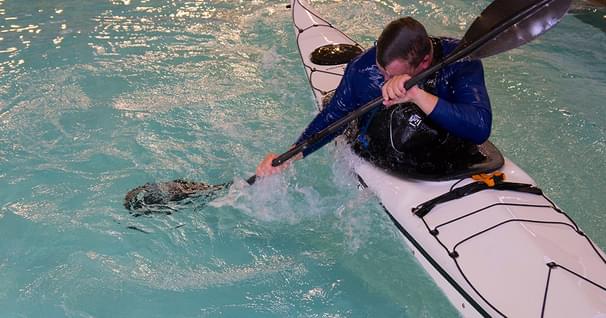Tips For Paddling A Tandem Kayak
Tandem kayaks, or doubles, are a great way for two people to get on the water together and a fantastic way to introduce new paddlers to the sport. That being said, it's important that you're both playing by the same playbook because not only will you get more performance out of the kayak, you'll avoid frustrating moments.
Tandems are typically longer and wider than single kayaks, which make them fast and stable. This is why they are great for kids, parents, grandparents, or even your dog. In fact, your passenger doesn't even need to paddle if they don't want to, as long as they're sitting up front and you're in the back. But if both people are paddling, tandems can travel surprisingly fast over the water. And here are a few tips that will help you have the best experience possible in a tandem.
Most importantly, paddling in unison is key. Not only because it moves your kayak the most efficiently, but you'll avoid clashing paddles, which could cause you to flip.
Something else to consider is that if there's one paddler who is
physically stronger than the other, it makes sense for them to sit in
the back while the weaker paddler sits in the front and dictates the
paddling pace.
50 years of lightweight, maneuverable, high-performing kayaks.
Check out this interview with Tom Keane, Eddyline Kayaks Co-Owner, on their journey!
Some tandems are equipped with the rudder which can help to keep the boat running straight or make small course corrections. But rudders are far from essential on tandem kayaks. The best way to turn a tandem kayak is to have the from paddler take a forward sweep stroke on one side, which is basically a forward stroke that sweeps a wide arc out to the side of the kayak while at the same time, the stern paddler takes a back sweep stroke on the opposite side of the kayak.
Now, although most tandem kayaks are designed to be extremely stable and tend to be difficult to capsize, if you do end up upside down, you have a few options. For paddling a sit-on-top tandem, you can climb back onto the kayak one at a time while the other person stabilizes it.
The other option is to swim the boat back to shore and get back on there. If you're paddling a sit-inside kayak, re-entering on the water is a much more difficult task since the kayak will be filled water. And so, unless you've taken a sea kayaking course and are confident in your abilities to re-enter the kayak from the water, it's important that you always stay close to shore and stick to calm water that's protected from wind and waves.
When paddling a tandem kayak with kids, there are a few things to keep in mind. First off, it should go without saying the kids, like adults, should always be wearing a PFD. As for positioning in the kayak, the best place for kids to sit is upfront so you can control the kayak and keep your eyes on them at the same time.
But another option is to actually to have a child sit between the legs of an adult. Either way, when paddling with kids, it important to stick to calm water and to stay close enough to shore so that in the unlikely event of a capsize, you can easily help the child swim to shore.
Related Articles
By changing how you edge and balance your boat you can increase your stability and adaptability. Using…
Whether you were new to paddling in 2018 or you're an experienced paddler, you can never stop learning.…
Mention “pool session” and the first image that pops into most kayakers minds is a class in how to roll.…
Photo Credit: Darlene Patterson Many people who have paddled for years can't keep a canoe on a straight…




